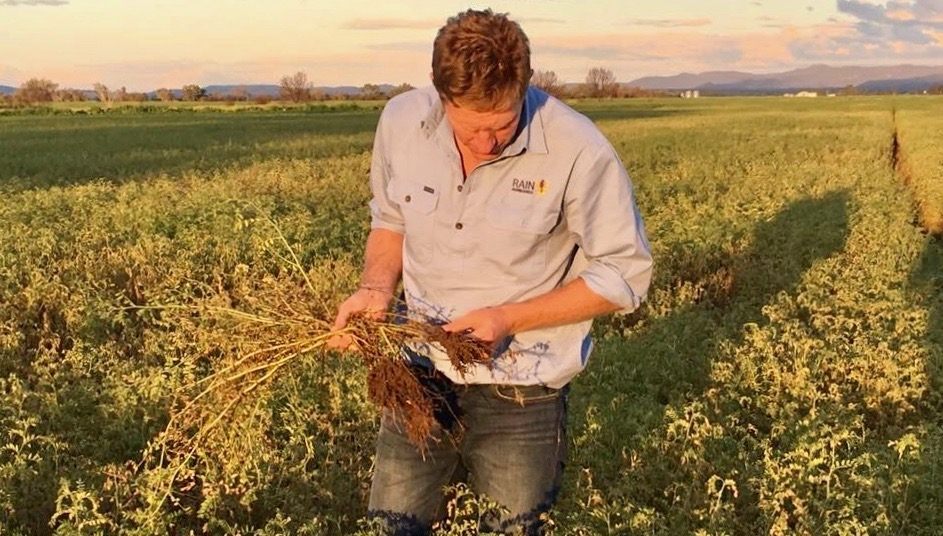Farmers planting more chickpeas to fetch over $900 per tonne
Chickpeas remain an attractive option for Australian farmers with prices driving production increases, although volatility in the market remains.

An increasing number of Australian farmers are devoting more land to chickpeas as prices remain high, currently pegged at over $900/tonne for early delivery. It’s an offer many are finding hard to refuse.
“Some of our growers are talking about not growing cotton this year, or growing less cotton, because they can make more money off chickpeas by doing one or two irrigations rather than eight during summer,” says Ian Grellman, Rain Ag’s commodities specialist.
Last season Australian farmers produced close to two million tonnes of chickpeas, supplying a fifth of India’s annual consumption. This year’s crop is expected to be a similar size, if not larger than last year. Despite the volatile chickpea market and the difficulties that can arise when growing chickpeas, more farmers than ever are preparing to sow the pulse crop.
“The biggest season we’ve had, prior to last year, was about 600,000 tonnes so you can see there has been a huge increase in the production of chickpeas,” Ian adds.
“Central QLD already looks pretty big. Cyclone Debbie has made a big improvement in the soil moisture, so they’re expecting a huge crop up there, and I think a lot of growers in NSW are going to prioritise chickpeas over wheat and barley.”
Fixed tonnage contracts for delivery in October and November can currently be locked in at around $830 per tonne delivered Narrabri, Wee Waa, Trangie and Goondiwindi. Merchants are offering more money for the earlier deliveries to fill a gap in the market between northern and southern hemisphere chickpea production.
“Early October is when the northern hemisphere supplies are at their lowest, so our crop fits perfectly with the northern hemisphere and the earlier we can ship it the more value is placed on it,” explains Rain Ag’s Tim Whan, grower representative for the Northern Region of NSW.
“Once the bulk of production comes in in November the pipeline is full again. The reason we sometimes experience price volatility with chickpeas is that 95% of our crop is exported to the likes of India, Pakistan and Bangladesh. Those markets are built on speculation so it’s very difficult for any traders anywhere in the world to get good knowledge of the market fundamentals such as supply and demand.”
in Latest News
Share this post
Posts this year
- October 2024 (1)
- September 2024 (1)
- August 2024 (1)
- November 2023 (1)
- June 2023 (1)
- February 2023 (2)
- November 2022 (1)
- October 2022 (1)
- July 2022 (2)
- June 2022 (1)
Archived Posts
- Posts in 2023
- Posts in 2022
- Posts in 2021
- Posts in 2020
- Posts in 2019
- Posts in 2018
- Posts in 2017
- Posts in 2016